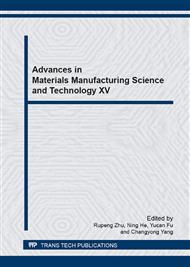p.357
p.361
p.366
p.370
p.379
p.385
p.391
p.396
p.402
A Study on Tribological Behavior of Engineering Ceramics - Representative Metals
Abstract:
In order to obtain the optimal engineering ceramics-metals pair with the best tribological performance, the tribological orthogonal tests for engineering ceramics such as Si3N4, SiC, ZrO2 and representative metals such as 45steel, CCr15 bearing steel, tin bronze QSn4-3 and tin-based babbit ZChSnSb8-4 with oil-less lubrication were carried out by using UMT-3 wear machine and SEM. Single factor analysis of load on friction and wear properties of Si3N4- babbit pair was performed. The results indicate that ceramic-metal pairs possess excellent tribological performance. Si3N4- babbit pair has the lowest friction coefficient and SiC-babbit pair is best in attrition. The friction coefficient varies sharply on low loads and the wear rate monotonous rises with the increase of load.
Info:
Periodical:
Pages:
379-384
Citation:
Online since:
October 2013
Authors:
Keywords:
Price:
Сopyright:
© 2014 Trans Tech Publications Ltd. All Rights Reserved
Share:
Citation:


